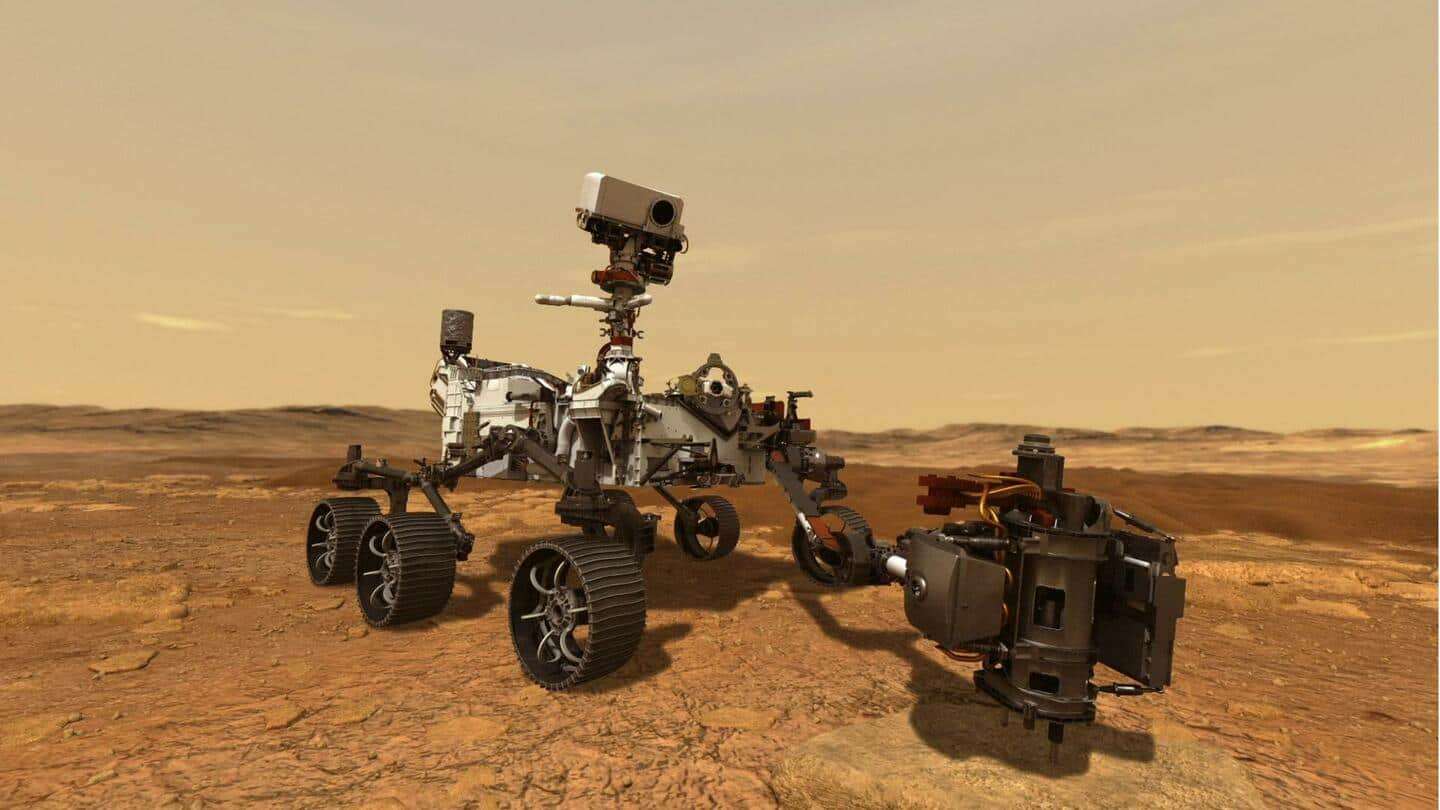
Historic! NASA Perseverance Rover deposits first sample on Mars surface
What's the story
NASA's Perseverance Rover has deposited its first sample tube, containing Martian rock, on the red planet. This is a "historic early step" for the Mars Sample Return program, which will bring back samples to Earth for in-depth investigation.
Over the next two months, the car-sized Rover will deposit a total of 10 sample tubes at the location, called "Three Forks," at the Jezero Crater.
Context
Why does this story matter?
This is the first time that a sample depot is being constructed on another planet and the first time that Martian rocks will be brought to Earth. Meteorites originating from the red planet were the only kind of Martian samples we have known so far.
If everything goes according to the plan, the Mars Sample Return (MRS) campaign will return the samples by 2030.
Sample
The first sample is a piece of igneous Martian rock
The first sample, named "Malay," is a chalk-sized core of igneous rock. It was collected on January 31, 2022, from "South Séítah," a region of Mars' Jezero Crater.
It took about an hour for the sealed sample tube to be retrieved from the Rover's belly, where the sampling and caching system abides. It was then dropped almost 3 feet below onto the Martian surface.
Safety check
The team had to ensure tube's correct landing
The next step was to ensure that the tube hadn't rolled into the path of the Rover's wheels and to monitor this, the team used the camera located at the end of Perseverance's 7-foot-long robotic arm.
They also wanted to make sure that the tube had not landed upright, on one end. From the pictures, it was confirmed that it landed flat.
Twitter Post
The sample tube is made from titanium
Not one to brag, but this is pretty momentous. By dropping this one tube to the ground, I’ve officially started setting aside samples that Mars Sample Return could bring back to Earth someday.
— NASA's Perseverance Mars Rover (@NASAPersevere) December 21, 2022
Learn more: https://t.co/abNfyxE8Cy pic.twitter.com/SkjzFIn6Kd
Backup plan
What if the tube lands upright?
"The mission has written a series of commands for Perseverance to carefully knock the tube over with part of the turret at the end of its robotic arm," said NASA, referring to a scenario where the sample tubes land on one end.
When tested with the Perseverance-like rover at NASA's Jet Propulsion Laboratory, upright landings occurred less than 5% of the time.
Official words
The primary mission of Perseverance Rover ends on January 6
"Seeing our first sample on the ground is a great capstone to our prime mission period, which ends on January 6," said Rick Welch, deputy project manager of the Perseverance mission.
"It's a nice alignment that, just as we're starting our cache, we're also closing this first chapter of the mission," he added.
The Perseverance Rover reached the red planet in February 2021.
Sampling
Here's how the samples will be brought back
As planned by the MSR campaign, the Rover will deliver the obtained samples to a future robotic lander.
"The lander would, in turn, use a robotic arm to place the samples in a containment capsule aboard a small rocket that would blast off to Mars orbit, where another spacecraft would capture the sample container and return it safely to Earth," as per NASA.
Depot
The Rover has 17 other samples onboard
The sample depot that is being created on Mars will serve as a backup in case the Rover cannot directly transfer the samples. In such a case, a pair of Sample Recovery Helicopters will complete the task.
The Rover has been collecting samples in duplicates and currently, has 17 other samples, including an atmospheric sample, safely tucked away in its belly.